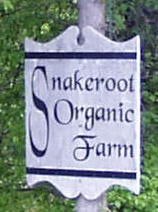![[Snakeroot Organic Farm logo]](pix/sof.gif)
At dawn
Canoe bow waves are quickly lost
on the shoreside
But go on out of sight
on the lake side.
-1986
The constant swish-swish of skis
On a day long ski.
The constant swish-swish of wiper blades
On a day long drive.
-1990
My dog, trotting barefoot
Steps on a garden slug
And thinks
Nothing of it.
-1999
Word spreads quickly
as I approach the pond.
All becomes quiet.
-1997
Hidden in the vines
a large warted cucumber
jumps out of reach.
A toad!
-1997
Delicate puffs
of marshmallow snow
carefully perched
on a branch,
await the trigger of my hat
to melt their way down my back.
-2010
Deep in the tomato jungle
Fruits of yellow, purple and red
Tell of their readiness
To go to market.
-2010
Sugarin' Chores
Snowflakes hurry through my flashlight beam,
As my boots knead new snow with spring mud,
On my nightly Hajj to keep the boil alive,
For as long as possible until the dawn,
To match the power of the flowing sap,
With my meager evaporator and will.
The prize at the finish line are jars of syrup
And Spring.
-2013
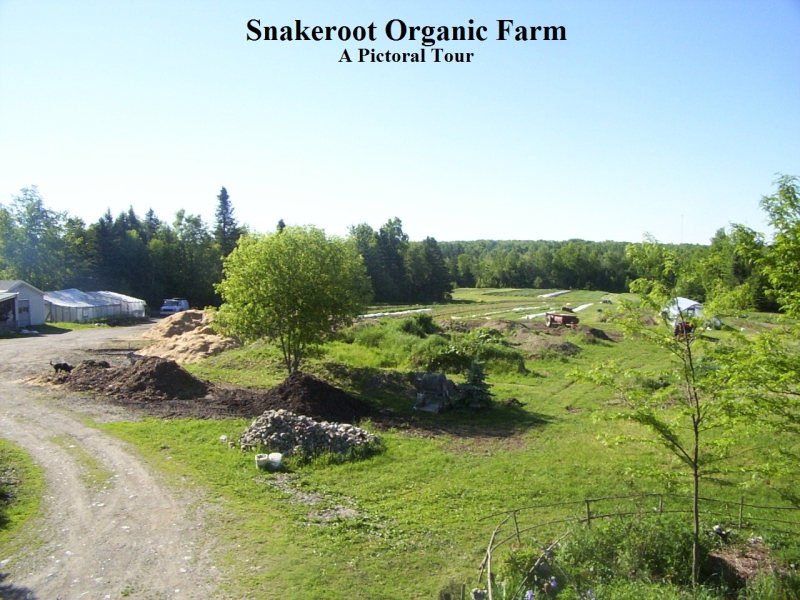 |
(Click on pix to enlarge.) |
|
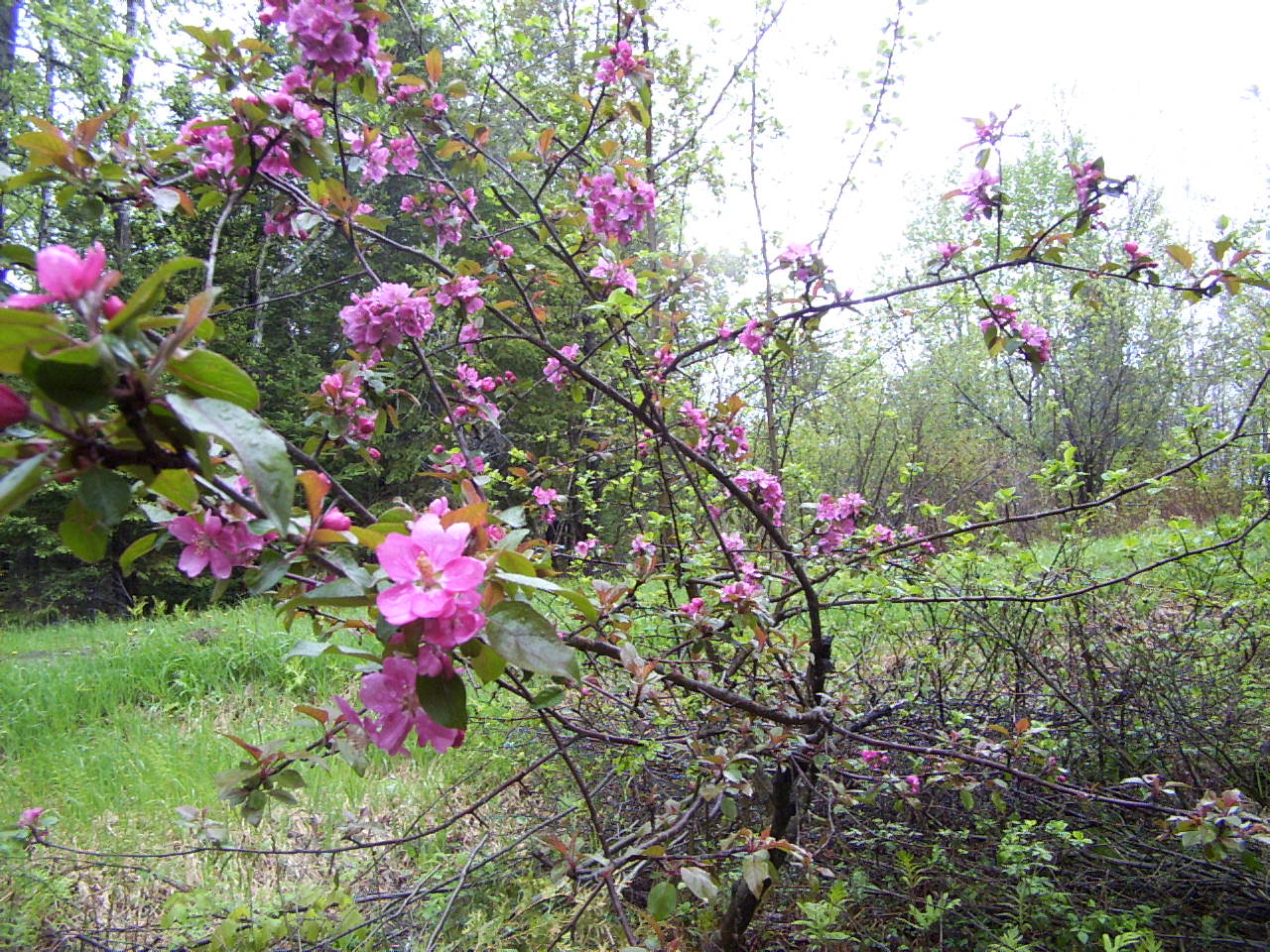 Grafted in 1998, this Redfield apple blossoms in late May, 2005. Redfield is a cross between a crabapple and a Wolf River, and has red
flesh. Grafted in 1998, this Redfield apple blossoms in late May, 2005. Redfield is a cross between a crabapple and a Wolf River, and has red
flesh. |
|
| By late May wintered-over parsley (left) and Swiss chard (right) are going to seed in the Sunroom attached to our home. We removed these soon after this photo and replaced them with cherry tomatoes and cukes for the summer. | |
| Greenhouse One in late April. In the foreground are summer squashes soon ready to be transplanted outdoors. On the right is the potting table where all the work gets done. Growing in the raised beds are beet greens, lettuce, carrots and summer turnips. Planting in the ground in the greenhouse starts in February for harvests starting in early May when the farmers' markets open. | 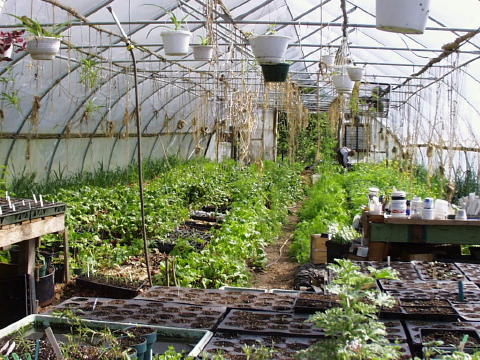 |
| In early May Tom inspects the fall planted garlic which is already a foot high. Planted from garlic rounds instead of cloves, the bulbs will be harvested in early August. In July the "scapes" (curly-cue tops of the garlic plants) are cut and brought to market for an early taste of fresh real garlic. | 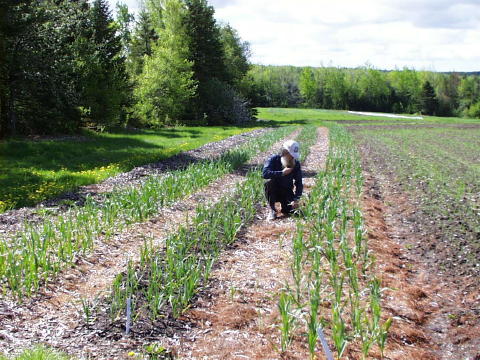 |
| We grow three rows of lettuce on a bed (green in the foreground, red in backround). On the right are radishes and beet greens, covered with floating row covers to protect against the flea beetles. Beyond the row covers is the hayfield where we cut hay mulch for tomatoes and celery. | 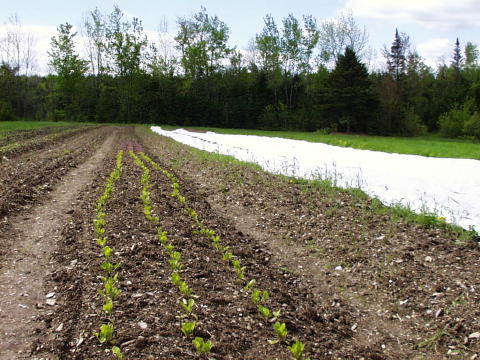 |
In October and November residents of Pittsfield bring their leaves to our farm. We have become the official dropoff point for leaves for the town, and people come here instead of going to the landfill. The Town estimates this results in a savings of over $3,000 annually to taxpayers. As the leaves arrive, we sort out shredded leaves and pine needles, which go immediately into a separate pile to be used for mulch, and the rest are mixed with cow manure and composted for a year. Any not used by midsummer are stored for a few years to produce leaf mold to be used in potting soil. See more about using leaves for mulch at our Using Mulches page. |
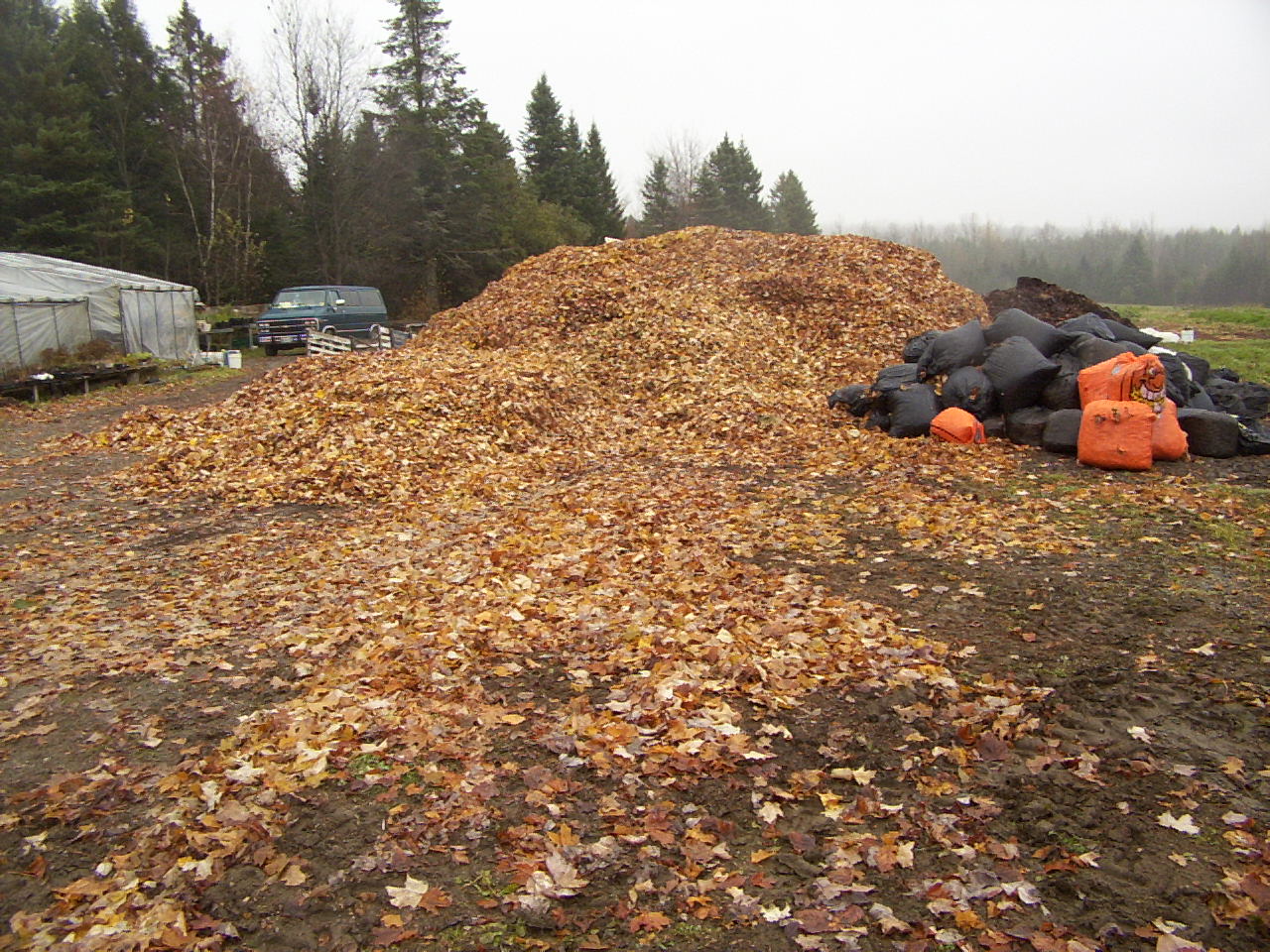 |
Angelica is one of several perennial herbs we grow in "side gardens". This one is about to bloom in late June, 2004, and almost obscures
Lois's daughter Lori. |
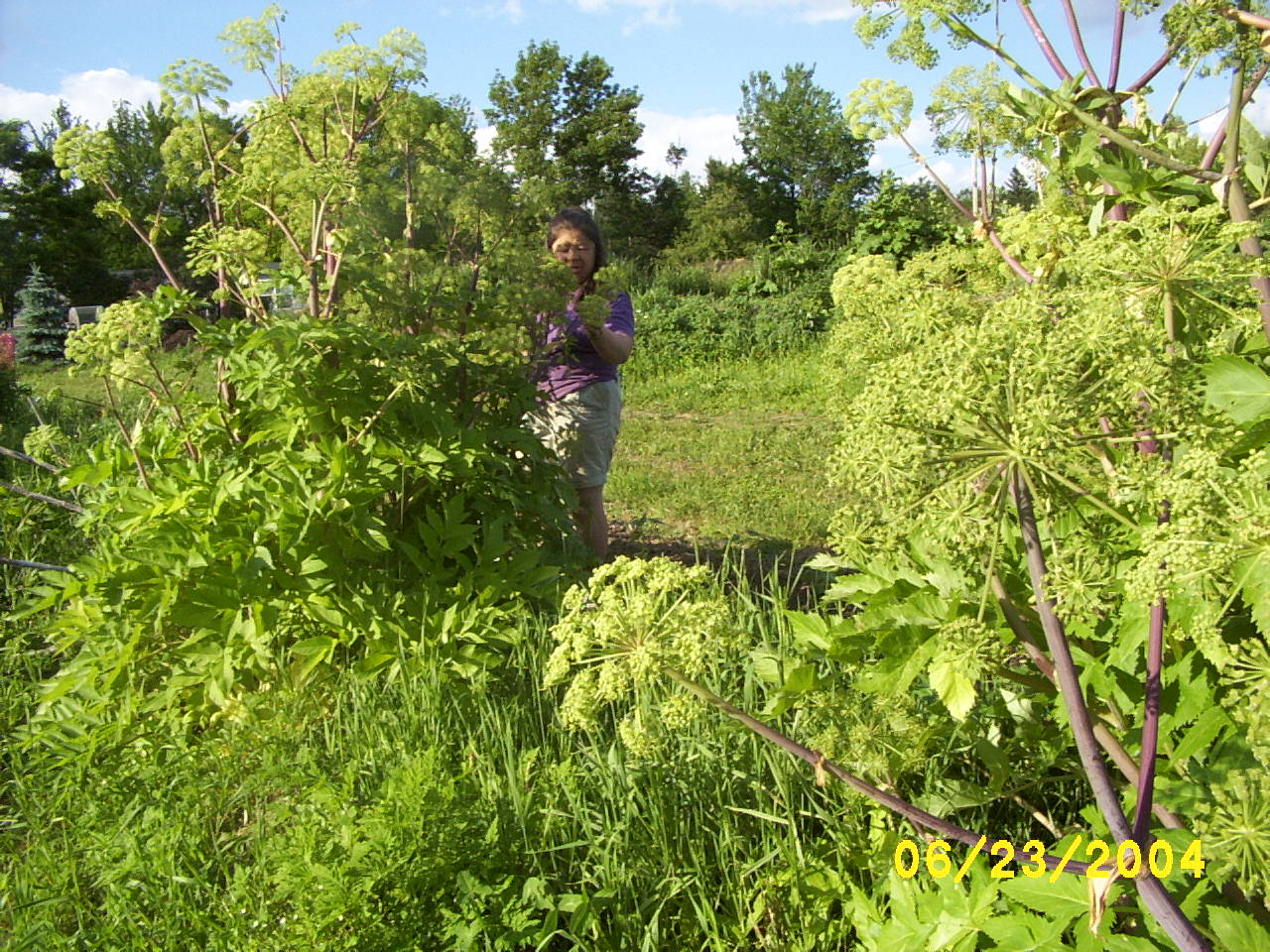 |
 27 Organic Farm Road, Pittsfield Maine 04967 http://www.snakeroot.net/farm owned and operated by Tom Roberts & Lois Labbe Tom: Tom@snakeroot.net (cell) 207-416-5417 or Lois: Lois@snakeroot.net (cell) 207-416-5418 Gardening for the public since 1995. |
|
|

